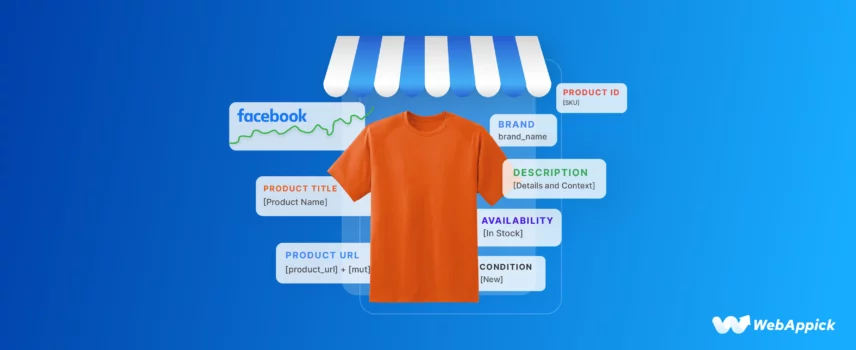
How to Generate Facebook Product Feed in WooCommerce
As of February 2024, Facebook is the third most visited site in the world, and more than one-third of its users shop from this social media site.
Facebook provides multiple features for eCommerce stores to promote and sell their products within the platform. If you are a WooCommerce store owner, you can’t possibly ignore this marketing channel.
You can build a fully functioning storefront on Facebook, run dynamic ads, and even list your products on Facebook Marketplace. As a result, you can reach many potential customers and grow your conversions manifold.
What do you need?
First and foremost, a Facebook product feed. A Facebook product data feed will help you list your WooCommerce store products in bulk, ensuring accuracy and efficiency.
How to create a product feed for Facebook?
That’s what we will find out in this article. Let’s get started.
What is a Facebook product feed?
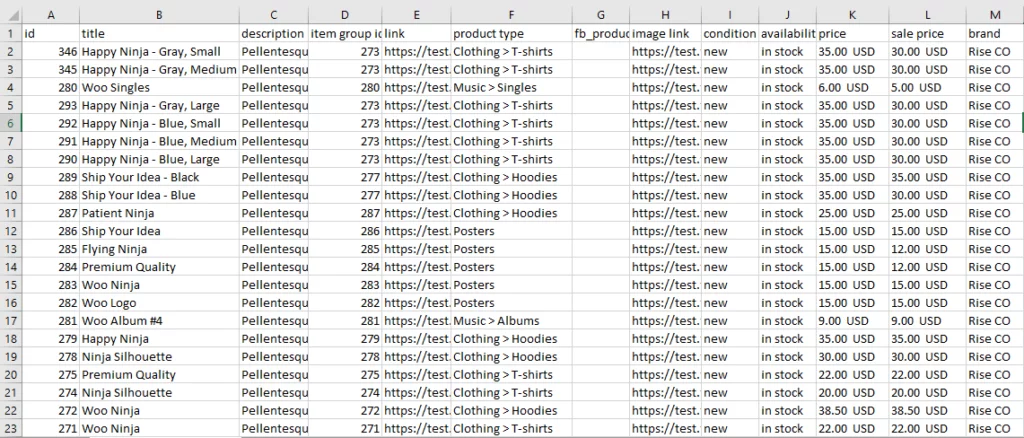
Above is an example of a Facebook product feed. As you can see, column headers are used to define features, specifications, and technical details, with corresponding values inserted beneath them.
When you upload this Facebook catalog product feed file to Facebook, the platform will automatically fetch your WooCommerce product details and create product pages for them. After that, you can assign where you want to display them (on Shops, dynamic ads, Marketplace, etc.)
Product feed files are a powerful tool to quickly and efficiently list and showcase products on third-party platforms besides your eCommerce/WooCommerce store. With product feed marketing, you can simultaneously display and promote your products on giant marketplaces, search engines, price comparison engines, social media sites, and affiliate sites.
As a result, you can incredibly boost your reach, conversions, SEO, ROAS, reputation, and overall business growth.
You must note that you cannot add product feed to Facebook directly. Facebook and Instagram have a dedicated platform called Meta Commerce Manager, which manages all eCommerce promotions.
Facebook product feed requirements and specifications for WooCommerce store
Your next question is, how do you create a WooCommerce Facebook product feed?
To create feed files, you must first learn the channel’s specifications. Every channel supporting product feed marketing has its own feed specifications.
Let’s go back to the example.
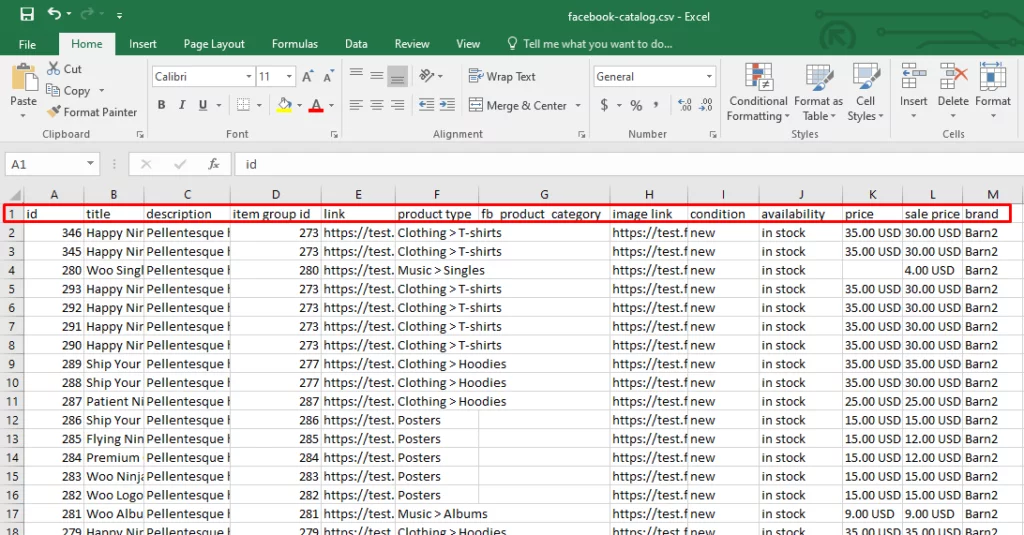
The red-marked column headers consist of the characteristics of your products, such as prices, IDs, types, categories, descriptions, tax, shipping, links to images/products, etc. These are called Attributes of the product feed.
Here are the attribute requirements of Facebook channels –
List of attributes for Facebook Shop
- id
- title
- description
- availability
- condition
- price
- link
- image_link
- Brand, MPN, or GTIN (include at least one)
Attributes for Facebook Marketplace (USA and France only)
- id
- title
- description
- availability
- inventory
- condition
- price
- link
- image_link
- Brand, MPN, or GTIN (include at least one)
- google_product_category
Attributes for Facebook ads product feed, page shop, dynamic ads, Instagram shop
- id
- title
- description
- availability
- condition
- price
- link
- image_link
- Brand, MPN, or GTIN (include at least one)
How to create a WooCommerce product feed for Facebook
Creating a product feed in a spreadsheet tool or code editor is pretty straightforward. You can simply set the attributes and input your product details underneath them.
Simple, right? However, this method is manual and can raise a number of challenges.
We will cover the drawbacks of manually creating a feed later in the article. Simply put, this method is very challenging and error-prone, and we strictly vote against it.
To generate a Facebook product feed for Woo products, you must use a product feed management tool. As we all know, WordPress and WooCommerce have plugins for just about anything.
The platform has several feed plugins as well. We will pick the best one among them, known as CTX Feed. This WooCommerce plugin can save you an incredible amount of time and effort and make the Facebook product feed connection and management process a breeze.
CTX Feed has a premade template for over 130 channels, including Facebook and Instagram catalog feeds.
Here’s how the plugin streamlines the entire process –
- Provides a built-in template that knows all the guidelines, formation, and attributes of the channel.
- Automatically populates necessary attributes when you select the template.
- Automatically collects your WooCommerce product data and inserts them under the attributes.
- Automatically updates your feed files at your set interval.
- Supports connecting through feed URLs through which you will never need to work on updating or managing feed manually again.
- Supports adding necessary additional custom fields to WooCommerce with a click.
- Allows you to map your Woo site categories with Facebook categories.
Overall, CTX Feed is your one-stop solution for all product feed connection and management needs.
Creating a Facebook product feed using CTX Feed
You can install the repository version. This is the most popular product feed plugin, with over a hundred thousand downloads.
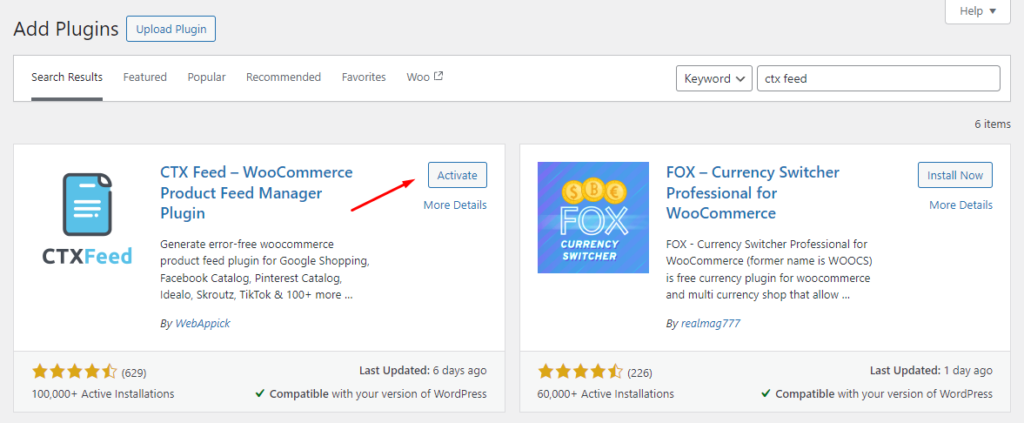
However, we highly recommend the pro version to enjoy all the advanced features that can enhance your customer’s experience on Facebook. Install and activate the plugin.
Adding custom fields for unavailable attributes
Before we jump to creating a feed, we want to point out some of the attributes again.
- Brand
- MPN
- GTIN
- google_product_category
While attributes like ID, condition, title, etc., are available on your WooCommerce product pages. You need to input these values when creating a product page.
So you don’t need to create anything extra for these fields; CTX Feed can fetch their values from your product pages automatically. However, the attributes we listed above (Brand, GTIN, MPN) are unavailable on WooCommerce.
But you must include their values for Facebook to display your products.
What to do?
WooCommerce stands out as the most flexible eCommerce platform, offering unparalleled versatility. There’s virtually nothing you can’t accomplish or customize with this powerful eCommerce plugin.
If you need to add any extra fields to your WooCommerce product pages, you can do so by adding them as custom fields. After adding them, you can add their values from individual product pages.
However, this process requires some technical skills, which most Woo retailers are not fond of. This is one of the reasons we picked CTX Feed.
The plugin already knows what attributes are available on Woo product pages and what are not. It has integrated all possible custom fields in its settings and 5 complete custom ones.
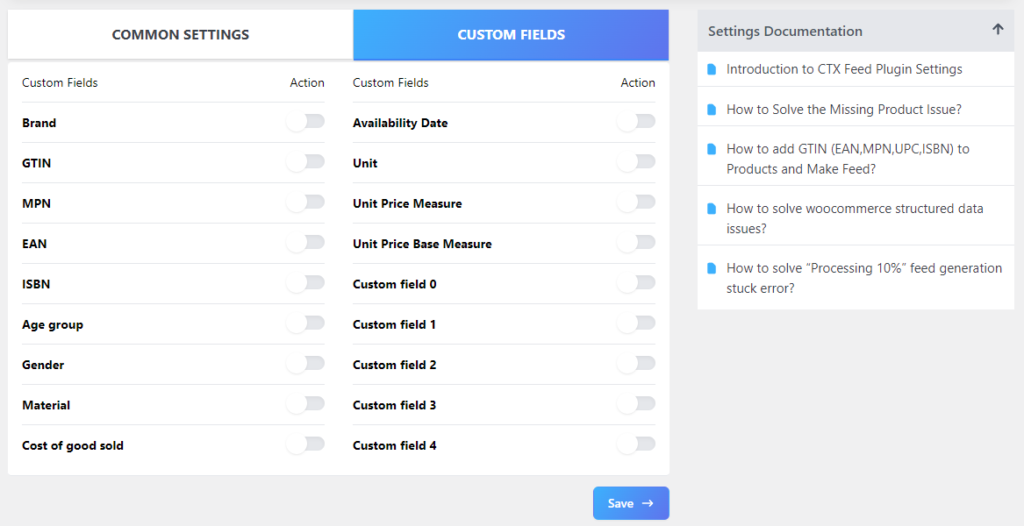
For Facebook product feed, enable Brand, GTIN, and MPN.
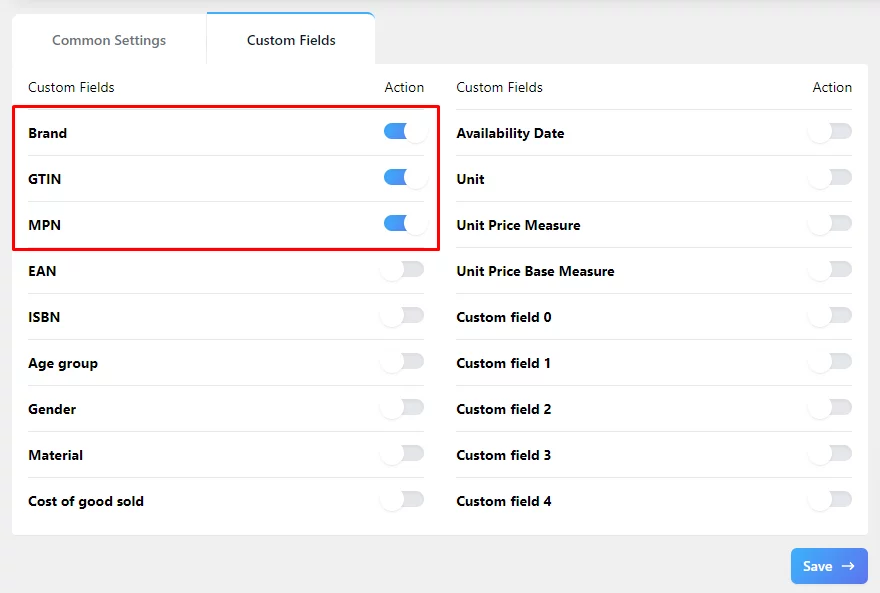
Go to your product pages and find the newly added fields under the Product Data >> Inventory tab. Enter a value for those fields, and CTX Feed will automatically fetch the values when creating the feed.
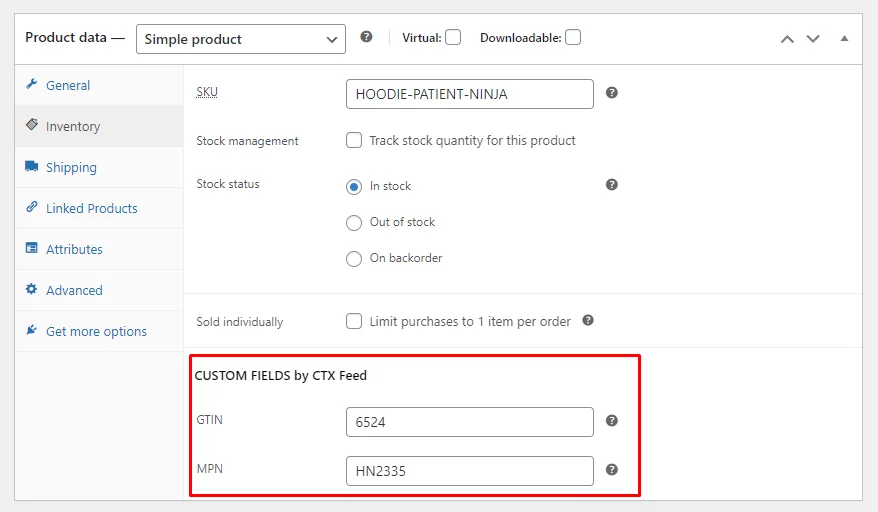
CTX Feed has a dedicated menu for creating brands for your products.
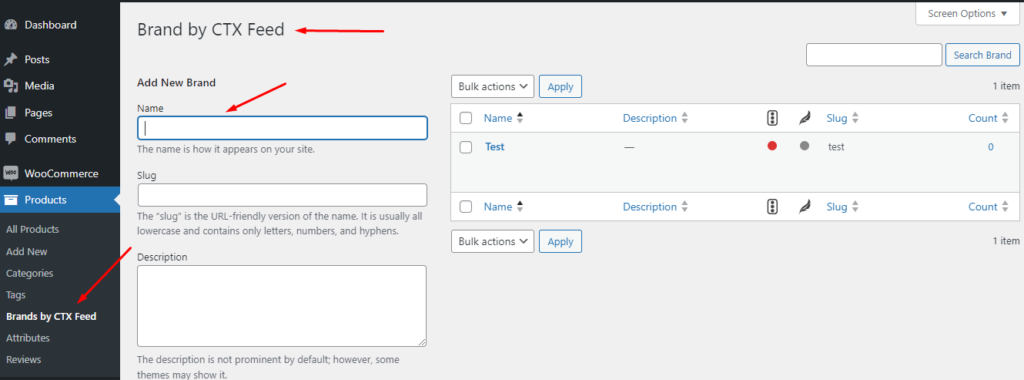
You can also create and assign from individual product pages.
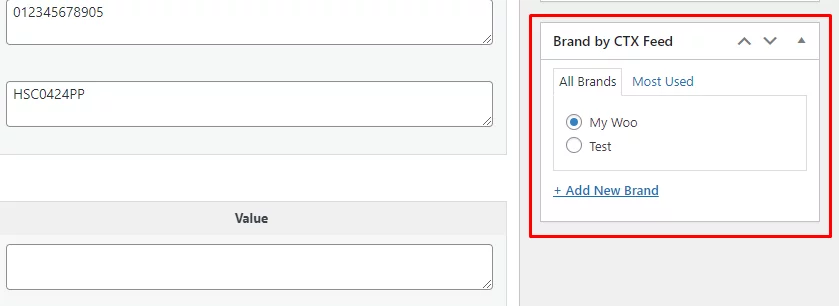
Creating the Facebook product feed
Now that we have all the required fields and values available on our product pages let’s jump to creating the Facebook shop product feed.
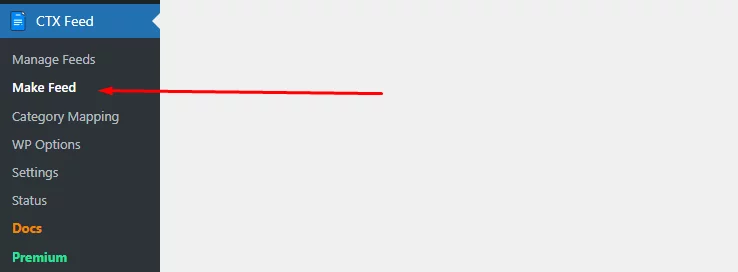
Select your country, feed name, and file type. Facebook supports CSV, TSV, TXT, and XML formats.
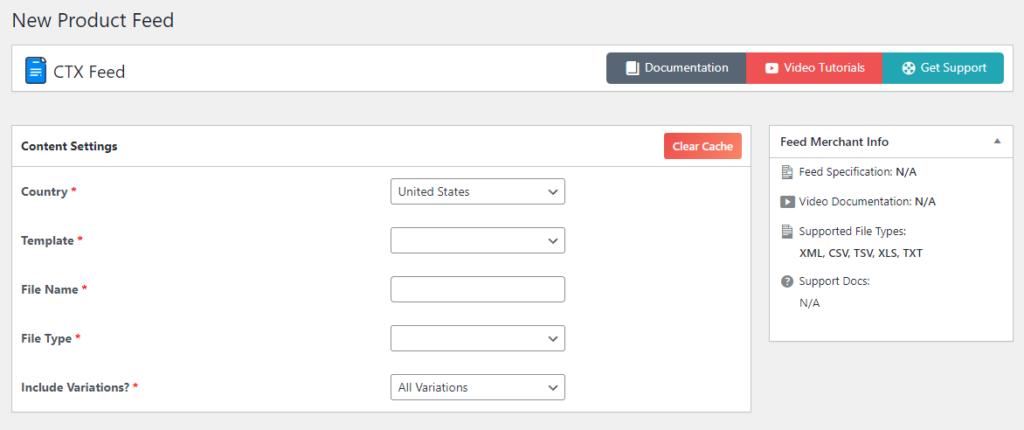
The Template dropdown, as we have explained already, is the treasure chest. Scroll and select your Facebook product feed template.
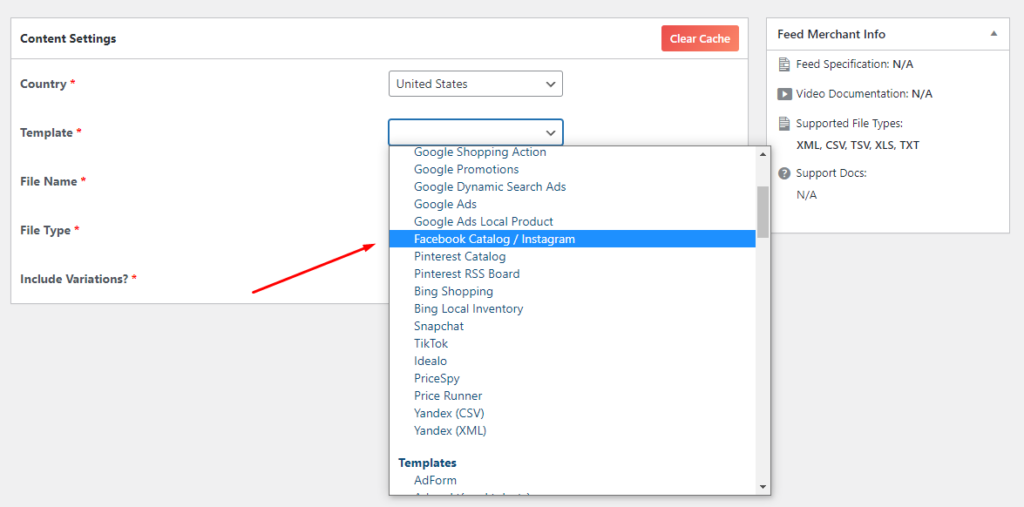
It’s important to highlight that a single product feed can be utilized for listing and promoting on both Facebook and Instagram. Once you’ve selected the template, take notice of the automatically generated attributes displayed at the bottom.
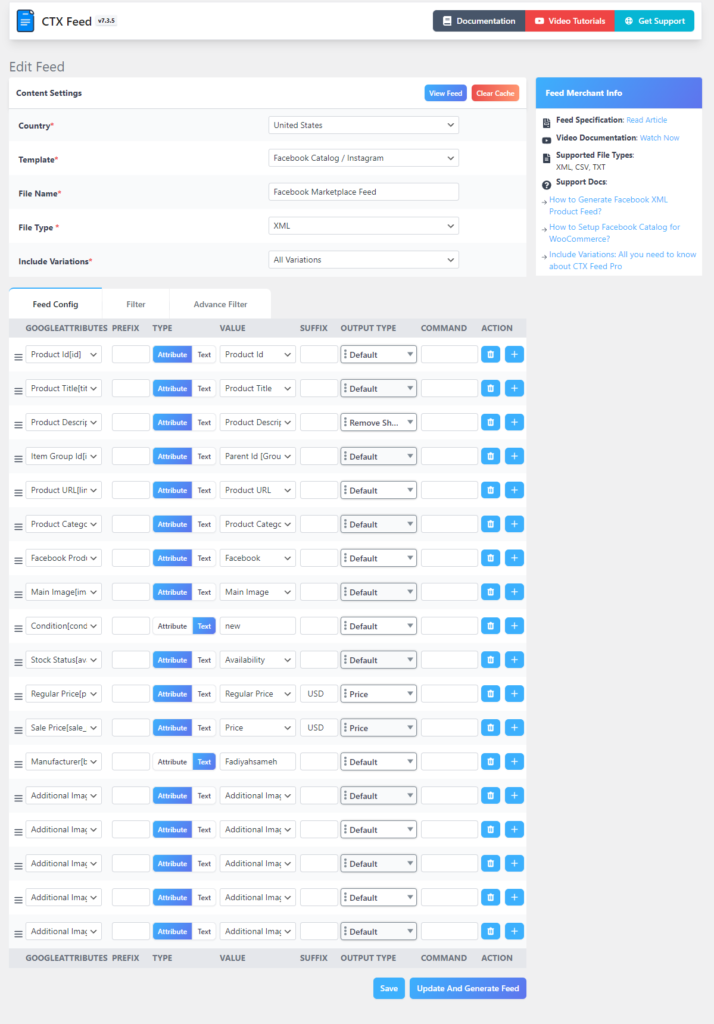
You can also choose to create a complete custom product feed by adding attributes manually if you want. Hit the save and generate button when you are done.
However, before you generate the Facebook product feed, we want to highlight some other important features.
Click on the filter tab.
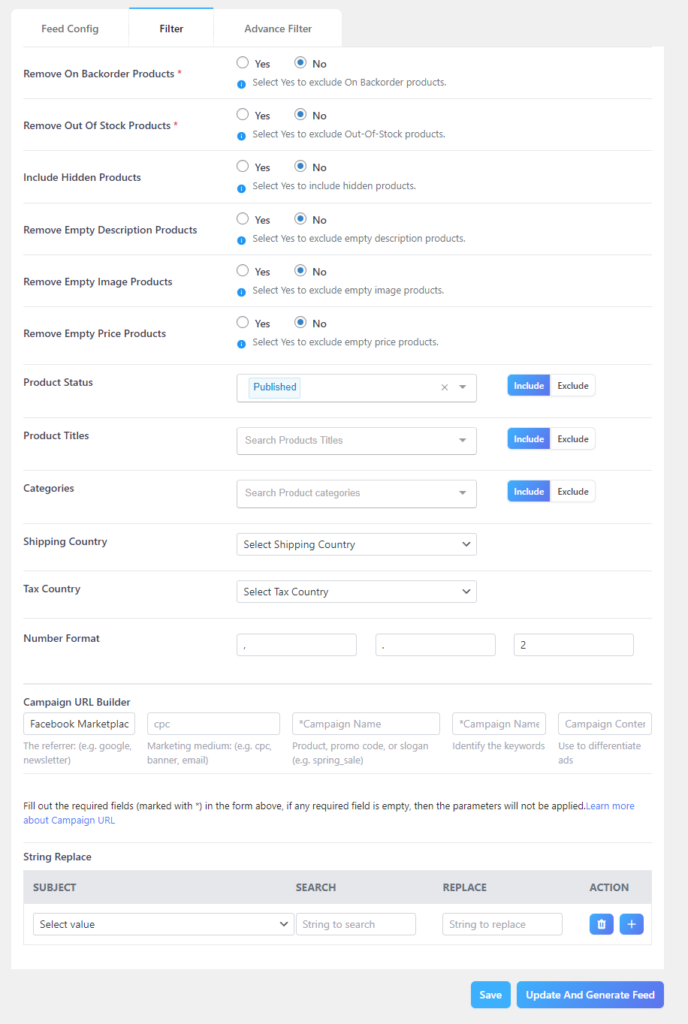
CTX Feed provides several useful filters. You can exclude incomplete or out-of-stock products automatically from the feed with just a single click.
You can also create custom feeds by specific products, product categories, or conditions. To track the performance of your product feed campaign, you can add custom UTM parameters to your feed link. You can connect this link to Google Analytics/ Facebook Pixel and track your campaign performance.
Mapping Facebook/Google categories for Facebook product feed
Every website has its own category or link structure. Similarly, Facebook and Google have their own category structure as well.
If your WooCommerce categories match Facebook/Google, your products will have better chances to appear on relevant searches. To match your Woo categories with the Facebook structure, you can map categories in your feed.
Mapping Facebook or Google categories for your Facebook product feed can ensure your products are accurately categorized and reach the right audience.
Attribute: google_product_category / fb_product_category
Why it’s important:
- Accuracy: Precise categorization improves product visibility and targeting in Facebook searches and ads.
- Performance: Relevant categories can lead to better ad performance and reach.
- Compliance: Some categories have specific requirements, and mapping ensures adherence.
How do you map categories?
CTX Feed is one of the very few tools available online that can map your WooCommerce categories with Facebook/Google ones. It has a dedicated menu for mapping categories.
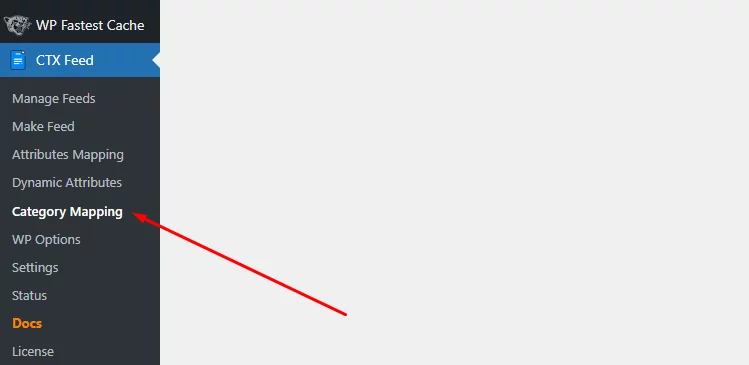
Click on the following button to create a custom attribute value.

Select your merchant, which in our case is Facebook. You can also select Google if you use the google_product_category attribute in the feed.
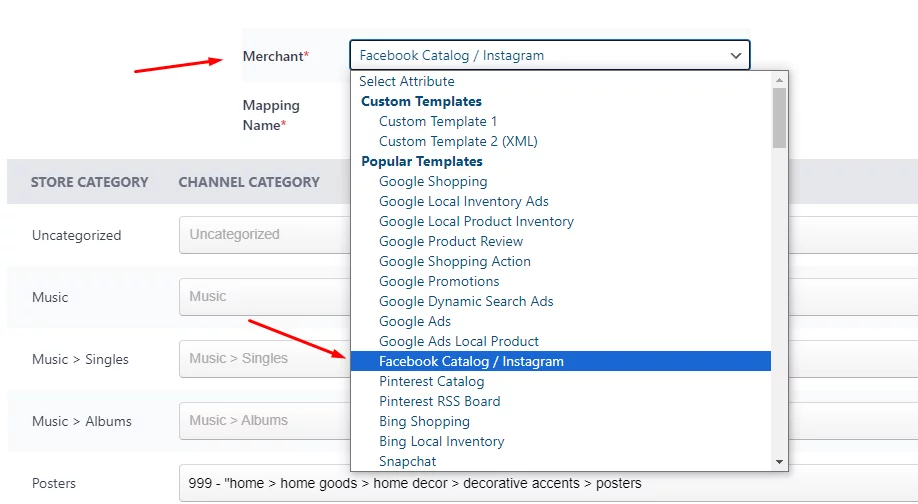
Now, map your categories with Facebook’s categories. Scroll from the dropdown or type in to match the categories.
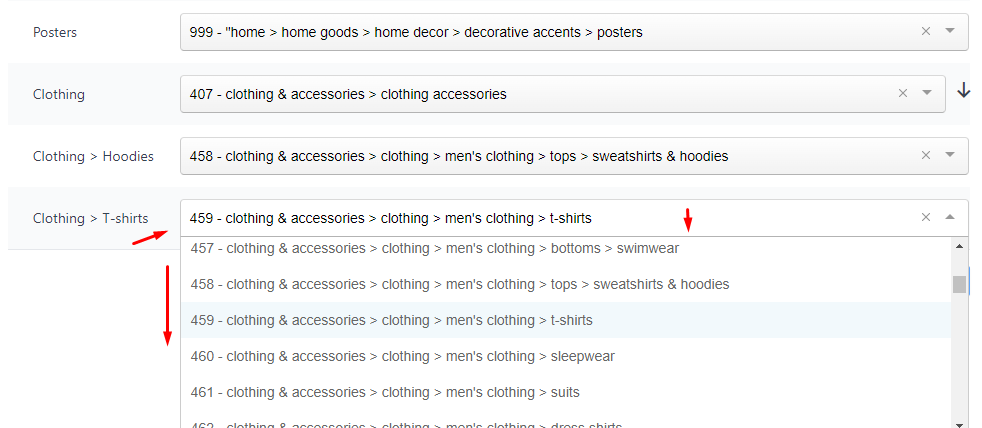
Create the category mapping and go to your attribute list in the feed window. Select the Facebook product category attribute.
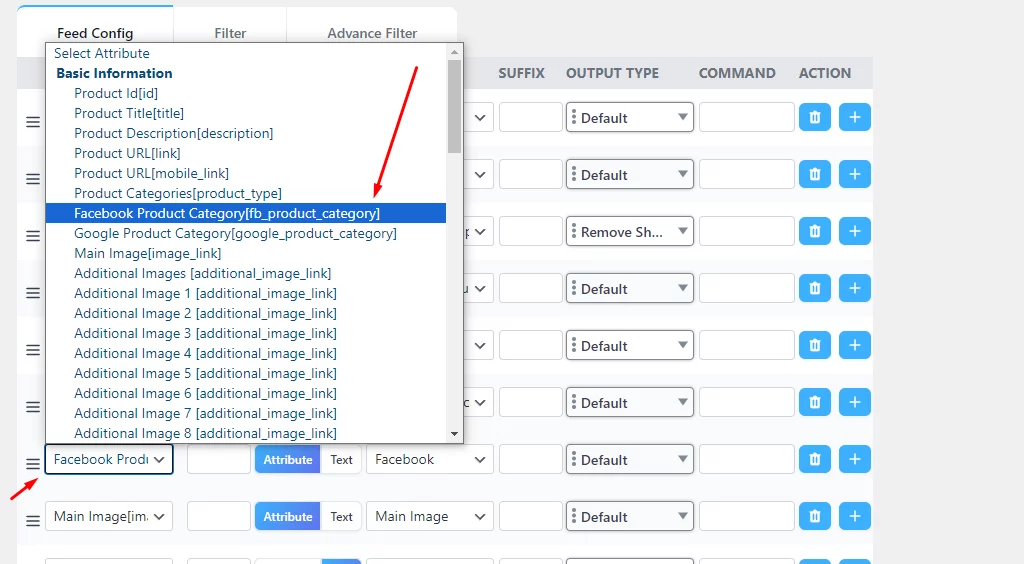
Next, select the newly created mapping category from the Attribute Value dropdown.
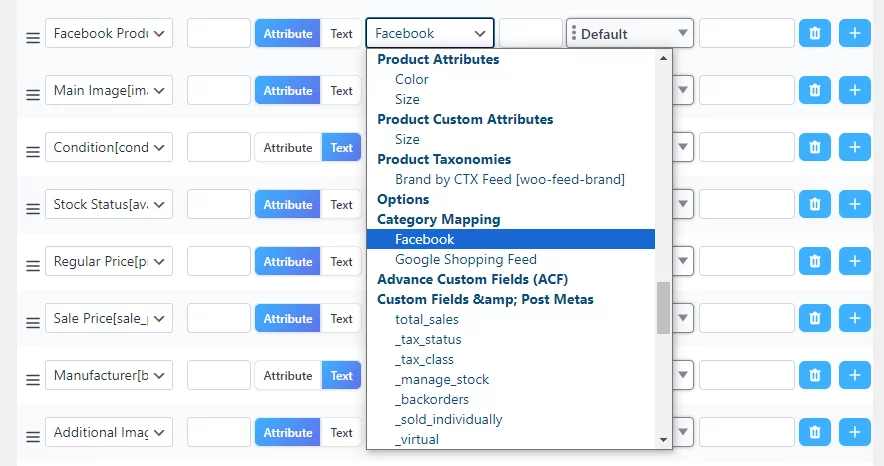
Finally, hit the save and generate button to complete the Facebook product feed generation process.
Facebook product feed management
You can find the feed on the Manage Feeds page. From this page, you can enable and set automatic update settings for the feed files.
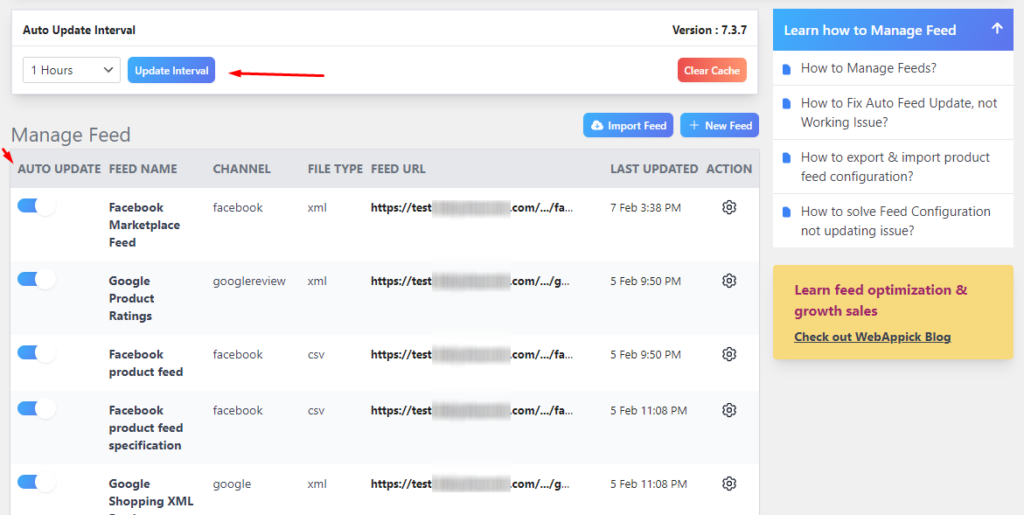
Setting a one-hour feed update interval means CTX Feed will check your Woo site for changes every hour and update the feeds accordingly.
Every feed has the following settings –
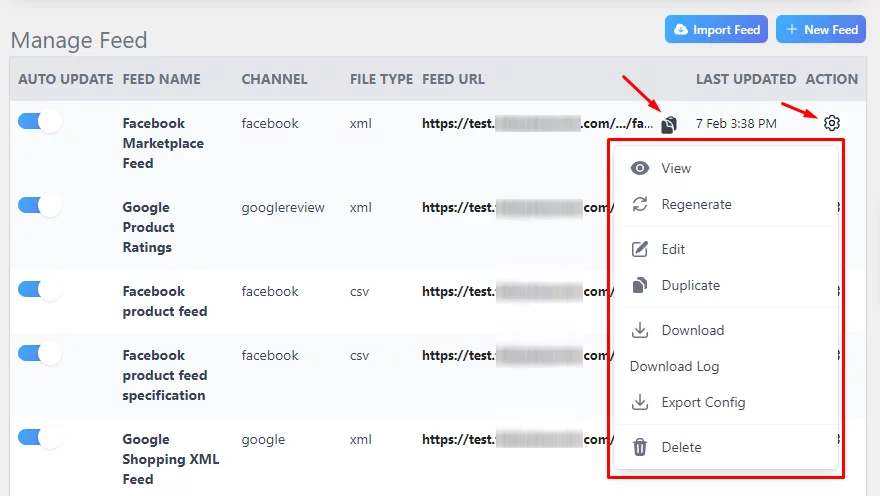
- View
- Regenerate
- Edit
- Duplicate
- Download
- Export Config
- Delete
In addition, you can copy the feed URL. This option is significantly crucial for automatic feed update and management.
We have learned so far how to set up Facebook product feed. Now, let’s check out how to add product feed to Facebook page.
How to set up and list products on Facebook
We have already mentioned that Meta Commerce Manager is the platform that manages all eCommerce promotions for Facebook and Instagram.
A new login will take you to this page. Click the button in the middle.
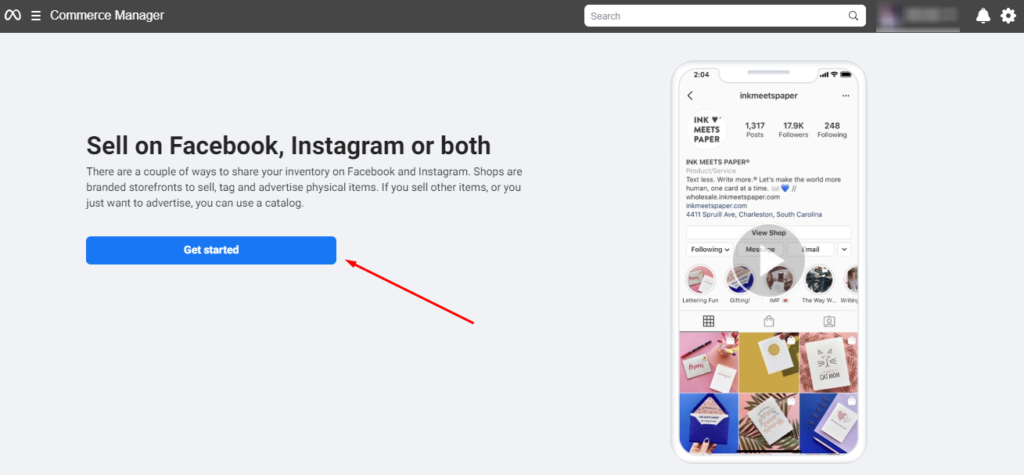
To add product feed to Facebook shop, select the first option. Otherwise, select the catalog option.
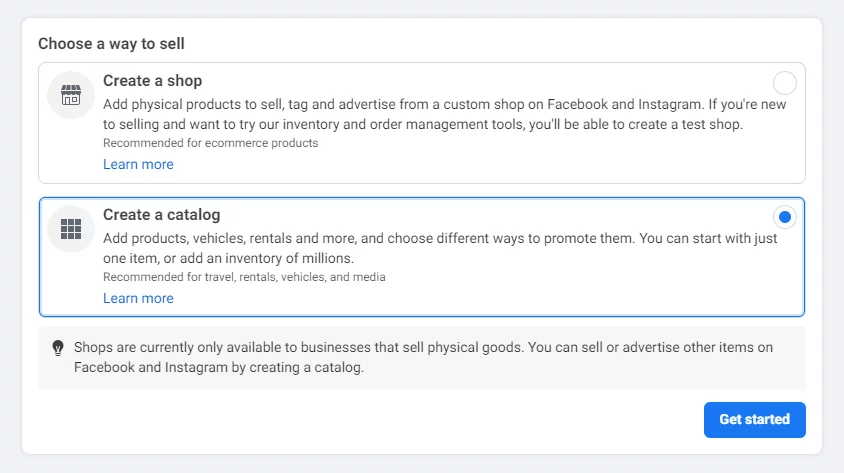
You are selling online products. Therefore, select the following options.
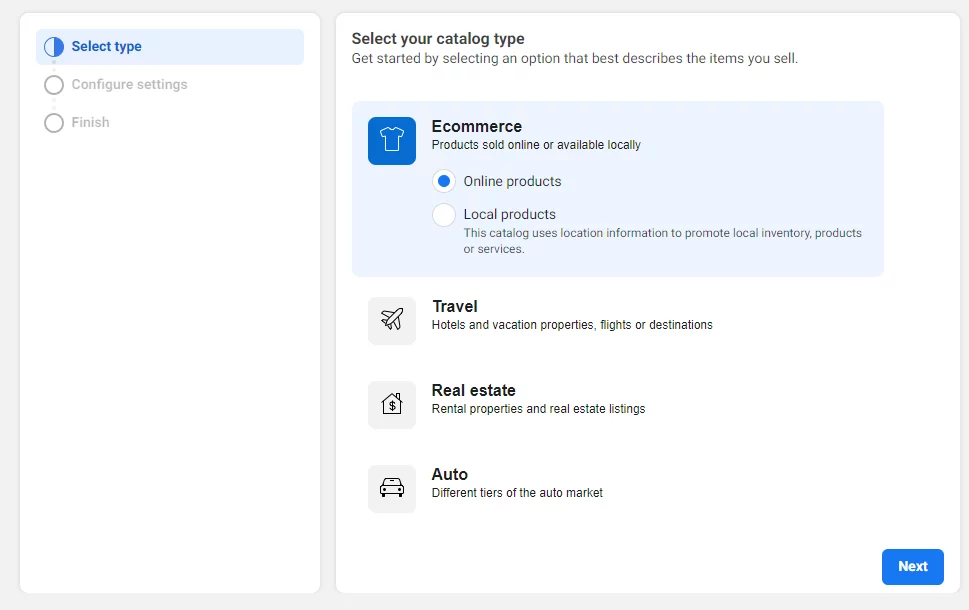
We are looking to upload/connect our feed, so we will go with Upload Product Info.
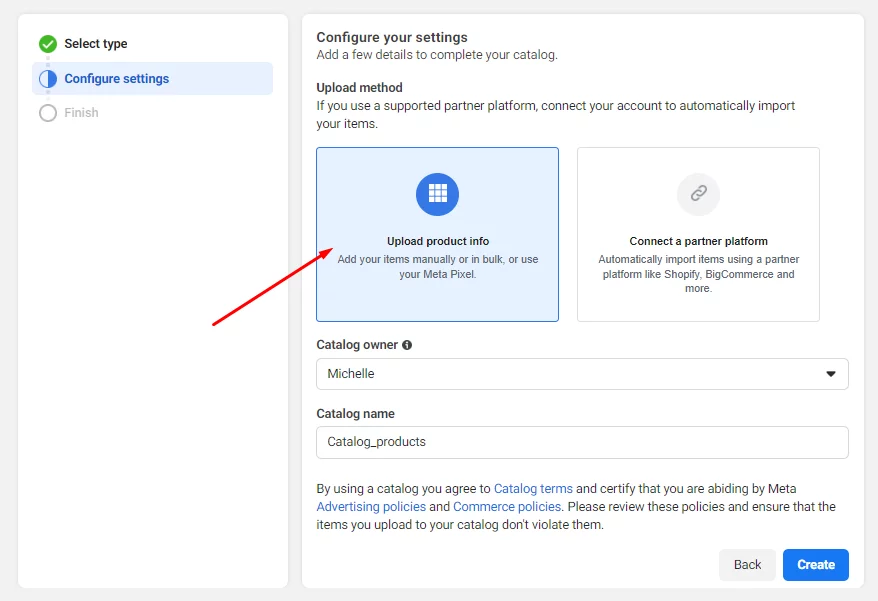
The Commerce Manager will create an empty catalog.
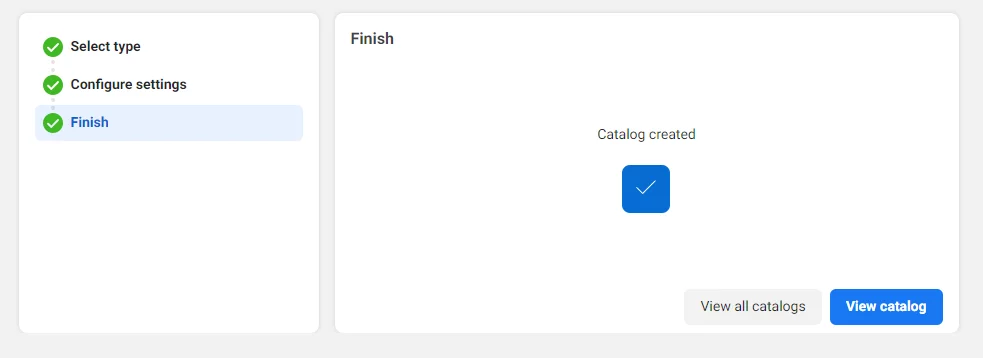
Go to Catalog>>Data Sources>> Data Feed. You can also download a Facebook Template from this page if you want to create a manual Facebook product feed.
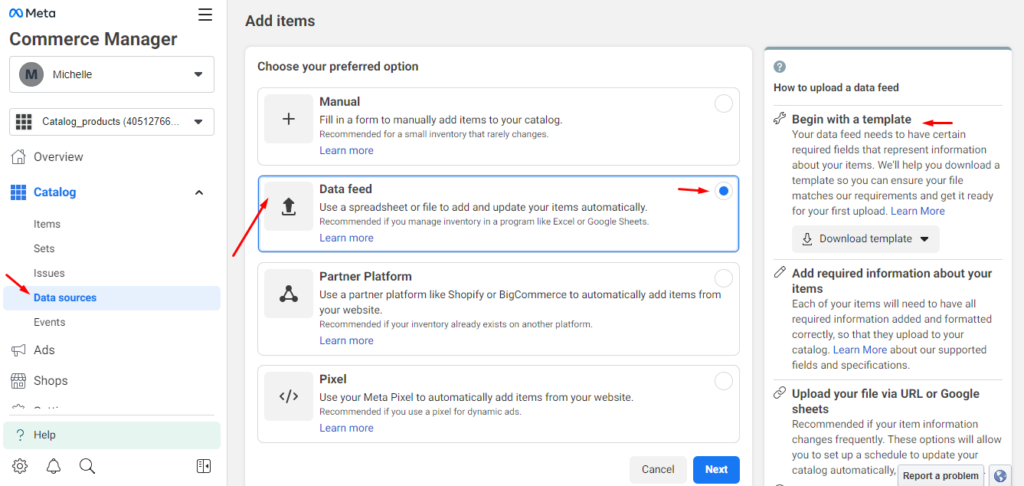
We will pick the Connect through URL option.
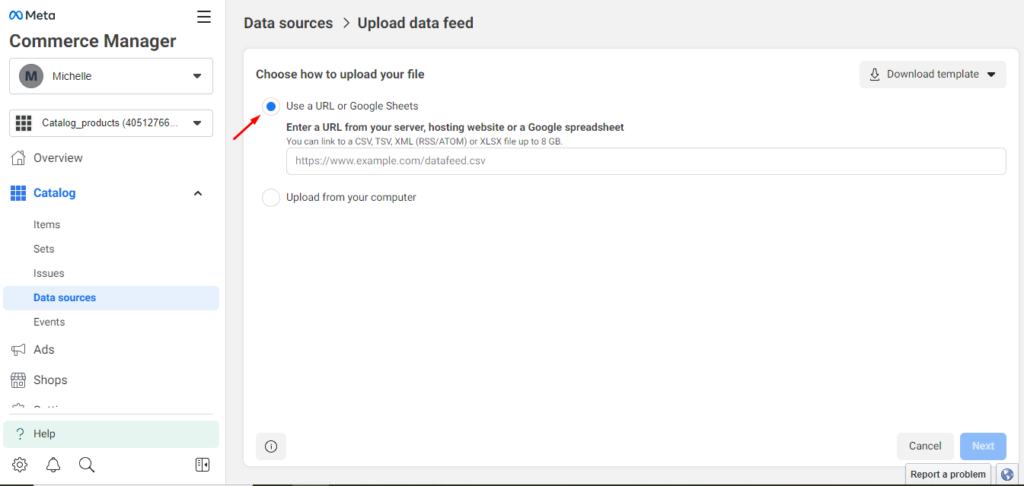
Copy and paste your Facebook product feed URL. Set automatic fetch frequency and click upload to complete the process.
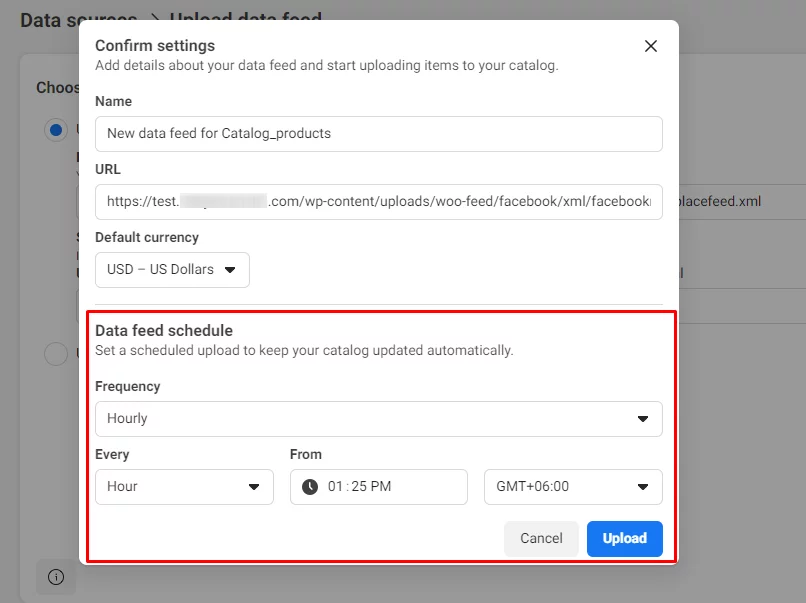
Remember: You must verify your business with Facebook before you can use this feed for different promotions.
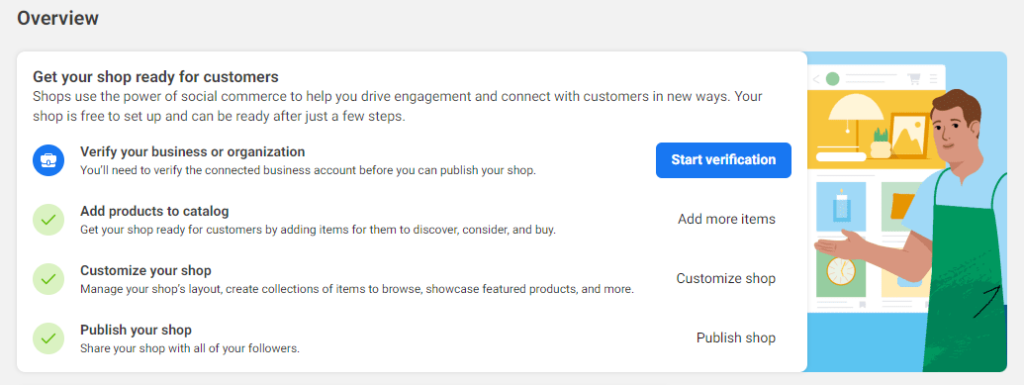
To create a storefront, go to the Shop menu and link to your official page.
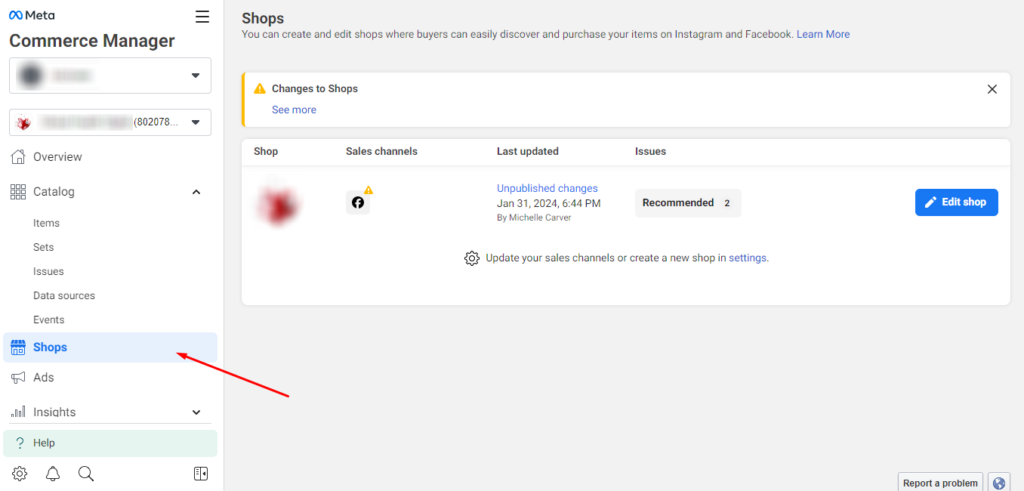
After that, you can extensively edit your shop page as per your liking.
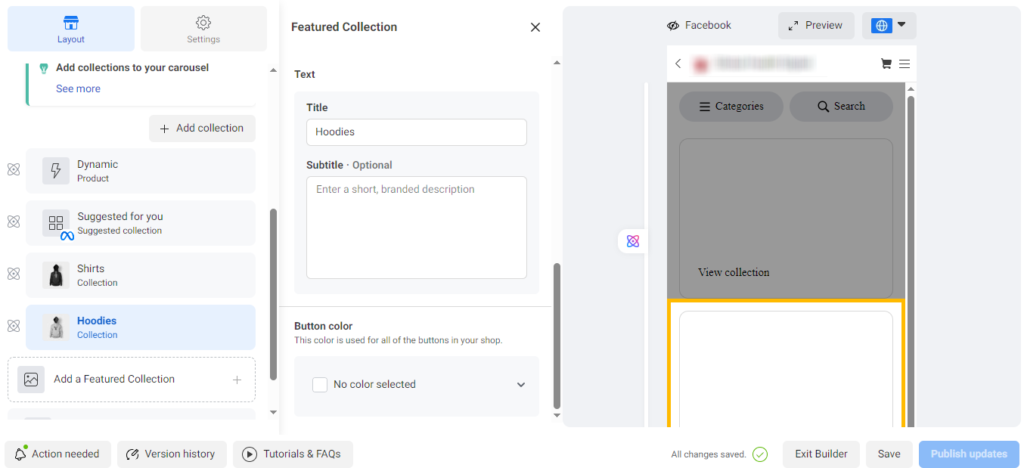
We want to explain how the Fetch Frequency of the Catalog Manager and the Update Interval of the CTX Feed work together.
- Any additions or modifications made to your products are collected by CTX Feed within one hour, adhering to your configured update interval.
- Meta Commerce Manager reviews your feed by accessing the linked feed URL every hour, following the designated fetch frequency.
- Commerce Catalog fetches all the updates from the CTX Feed’s feed link and ensures that its listings are updated.
In essence, the collaboration between Meta Commerce Manager and CTX Feed guarantees the consistent display of accurate and updated product details across various platforms such as Facebook and Instagram.
Why is manual Facebook product feed generation a bad idea?
While it’s technically possible to create a Facebook product feed manually, there are several compelling reasons why it’s generally considered a bad idea, especially for long-term success and scalability. Here’s a detailed breakdown of the drawbacks:
1. Time-consuming and inefficient
- Manually creating and updating product feeds, especially for large inventories, can be incredibly time-consuming and prone to errors.
- Adding new products, updating prices, managing stock levels, and ensuring formatting accuracy all require manual effort, hindering your productivity.
- As your product catalog grows, so does the workload. This makes manual maintenance unsustainable.
2. Error-prone and inaccurate
- Manual data entry increases the risk of errors, like typos, incorrect formatting, or missing information.
- Inaccurate feeds can lead to product disapprovals, poor ad performance, and missed sales opportunities.
- Maintaining consistent formatting and adhering to complex platform specifications can be challenging without automated tools.
3. Limited optimization and targeting
- Manual feeds lack the sophisticated targeting capabilities offered by automated tools.
- You miss out on features like dynamic category mapping, custom audience creation, and product group optimization.
- This limits your ability to reach the right audience with relevant products, hindering campaign effectiveness.
4. Lack of automation and scalability
- Manual methods don’t scale well as your business grows. Adding new products and managing complex feeds becomes increasingly labor-intensive.
- Automation allows for real-time updates, ensuring your feed reflects your inventory accurately and dynamically. Without automation, you miss out on the efficiency and consistency needed for larger product catalogs.
5. Inability to handle complex feeds
- Complex feeds with variations, bundles, or specific requirements might be impossible to manage manually.
- Automated tools can handle these complexities efficiently, ensuring accurate product representation and avoiding feed disapprovals. Trying to handle them manually leads to inefficiency and potential compliance issues.
6. Missing out on valuable insights
- Automated tools often provide reporting and analytics features. These features give you insights into feed performance and product visibility. This data is crucial for optimizing your campaigns and understanding customer behavior.
- Manually monitoring performance is difficult and provides limited data compared to automated solutions.
Overall, while manual product feed generation might seem like a simple option initially, it quickly becomes unsustainable and hinders your ability to optimize and scale your Facebook advertising efforts. Investing in an automated feed management tool offers significant advantages in terms of efficiency, accuracy, reach, and campaign performance.
CTX Feed – Facebook Product feed manager plugin – a complete overview
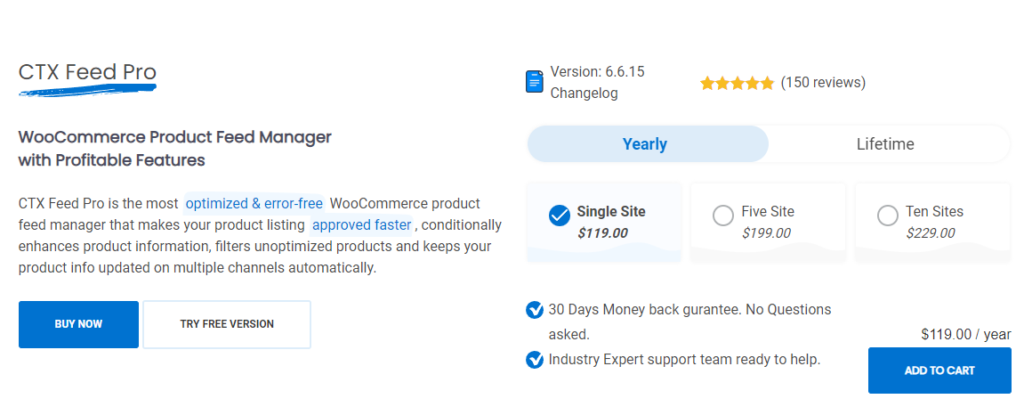
CTX Feed is the go-to solution for WordPress users looking to optimize their WooCommerce product feeds for Meta.
Let’s explore the key features that make CTX Feed the best Facebook feed plugin for WordPress in 2024.
Extensive channel support
CTX Feed provides robust support for over 130 channels, including major platforms like Google Shopping, Facebook, Amazon, Pinterest, Instagram, and more. This broad compatibility empowers businesses to expand their product visibility across diverse online marketplaces, search engines, and affiliate sites.
Simplified feed creation
Gone are the days of delving deep into each platform’s rules and requirements. CTX Feed simplifies feed creation with a treasure trove of ready-made templates for over 130 platforms. Select a template, and the plugin automatically populates the attributes, making the process quick and easy.
Automatic feed updates
Imagine never having to refresh product details manually. CTX Feed’s automatic update feature ensures your product information stays current at scheduled intervals.
This means your customers always see the latest and most accurate details without any manual effort.
Unlimited products and feeds
CTX Feed eliminates restrictions on the number of products or feeds you can manage. Whether you have a small inventory or an extensive range of products, this plugin allows you to upload an unlimited number of products and create an infinite number of feeds.
URL connection: Your superhighway for product feeds
The URL Connection feature acts like a superhighway for your product feeds, allowing you to share updated product information with different platforms or channels effortlessly. Connect through protocols like HTTP, FTP, or SFTP to ensure consistent and up-to-date product information everywhere.
Multiple feed formats
CTX Feed is a versatile tool in your online store toolbox that offers different formats for your product feeds. With support for XML, CSV, TSV, XLS, TXT, and JSON formats, the plugin speaks the language each platform loves, ensuring your product info looks great wherever it’s seen.
Customization options
Fine-tune attributes, select output types, and incorporate prefixes and suffixes with ample customization opportunities. This level of customization ensures that product data is accurately represented across diverse marketing channels, enhancing the visibility and appeal of your products.
Dynamic attributes and intelligent filters
CTX Feed grants granular control over product displays with dynamic attributes and intelligent filters. Set conditions based on specific criteria across different channels, refining product visibility to align with channel requirements.
Multi-language and multi-currency feeds
Seamless integration with WPML and Polylang enables the effortless generation of product feeds in multiple languages and currencies. This functionality is crucial for businesses catering to diverse customer bases across regions.
Category mapping and attribute mapping
Ensure optimal product alignment and discoverability with precise category mapping. Attribute mapping empowers you to extend or modify attributes, particularly product titles, enhancing product differentiation and visibility.
Batch feed making
CTX Feed tackles extensive inventories with ease by strategically breaking down feed generation into smaller batches. This ensures the seamless creation of product feeds, regardless of inventory size.
Facebook product feed – specific features
CTX Feed’s integration with Facebook offers functionalities designed to enhance product visibility and performance on the platform:
- Facebook Pixel tracking: Simplify the setup of Facebook pixel tracking without manual coding. This allows you to monitor online visitor activities and track the progress of your ad campaigns directly within the Facebook/Meta Business Suite.
- Facebook country/language override feed: Empower yourself to create feeds tailored to specific countries and languages, ensuring a personalized shopping experience for your targeted audience on Facebook.
Why promote your WooCommerce store on Facebook using a Facebook product feed?
In today’s digital landscape, reaching your target audience effectively is crucial for the success of any online store. And when it comes to tapping into a massive potential customer base, Facebook reigns supreme.
Here’s why promoting your WooCommerce store on Facebook unlocks a treasure trove of benefits:
1. Unparalleled reach and targeting
Facebook boasts over 3 billion monthly active users. This offers an unparalleled opportunity to connect with potential customers globally.
Its sophisticated targeting options allow you to laser-focus your campaigns based on demographics, interests, behaviors, and even purchase history. Imagine showcasing your handmade jewelry directly to people who have interacted with similar products or expressed interest in crafting hobbies.
This granular targeting ensures your ads reach the right people and can maximize your return on investment.
2. Building brand awareness and community
Facebook isn’t just an advertising platform; it’s a vibrant social space where you can build brand awareness and foster a loyal community. Create engaging content, share product stories, and run interactive contests to keep your audience engaged.
Also, the platform now allows you to build a fully functioning storefront. This organic interaction builds trust and brand recognition, turning casual browsers into raving fans.
3. Dynamic Ad formats and retargeting power
Facebook offers a diverse range of ad formats, from eye-catching images and videos to immersive carousel ads showcasing product variations. This flexibility allows you to tailor your message to resonate with different audiences and product types.
And with Facebook Pixel seamlessly integrated with your WooCommerce store, you can leverage the power of retargeting. Reach out to website visitors who abandoned their carts or browsed specific categories, reminding them of their interest and enticing them to convert.
4. Cost-effective marketing and measurable results
Compared to traditional marketing channels, Facebook advertising offers a cost-effective way to reach a large audience. You can set budgets that fit your needs and only pay for the clicks or conversions you achieve.
Moreover, Facebook provides comprehensive analytics tools, giving you deep insights into campaign performance, audience demographics, and ad engagement. This data empowers you to optimize your campaigns, refine your targeting, and maximize your advertising ROI.
5. Seamless integration and streamlined workflow
Several plugins and tools seamlessly integrate Facebook with your WooCommerce store. This streamlines your workflow and saves you precious time. Manage Facebook product feeds, track conversions, and analyze performance – all within a familiar interface. This eliminates the need for juggling multiple platforms and simplifies your marketing efforts.
Wrap up
In conclusion, promoting your WooCommerce store on Facebook is not just an option; it’s a strategic decision that unlocks immense potential for growth and success.
By leveraging its vast reach, powerful targeting capabilities, and engaging ad formats, you can connect with the right audience, build brand loyalty, and ultimately drive more sales for your online business.
Therefore, dive into the world of Facebook marketing with your Woo Facebook product feed and watch your WooCommerce store flourish.
